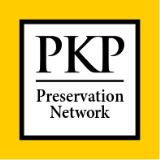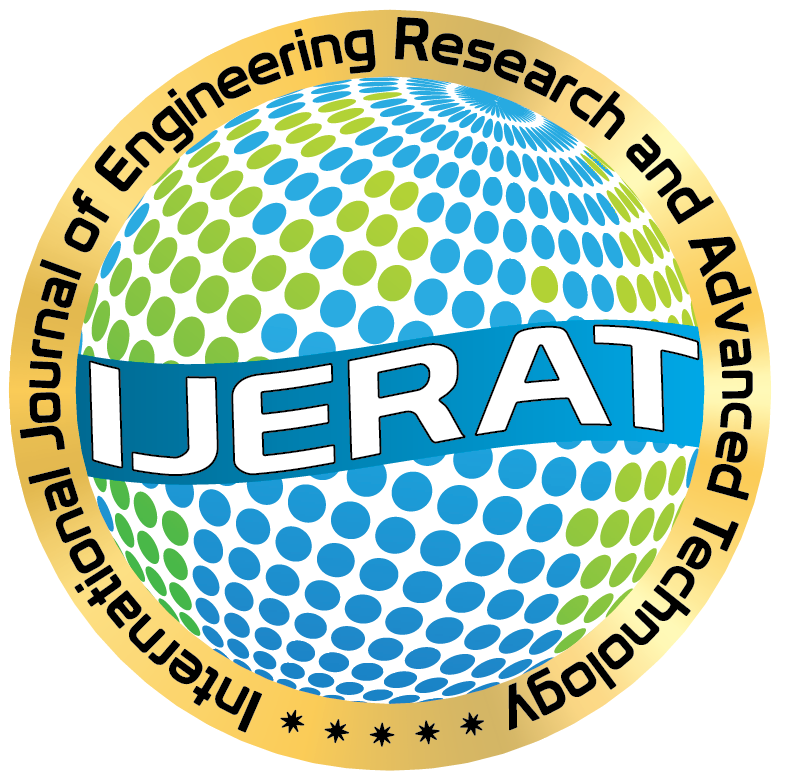Author Guidelines
Paper Submission
Authors will be required to submit, MS-Word compatible (.doc, .docx), papers electronically after logging in at our portal and accessing submit the paper link, available at Online Submission.
If you find difficulties in online submission, forward your doc file to the editorial office.
Once the paper is uploaded successfully, our Editorial office staff assigns a Unique Paper ID, acknowledges it on the screen and also sends an acknowledgment email to the author at her/his registered email ID. The authors must quote /refer the paper ID in all future correspondences.
IJERAT welcomes papers with high scientific quality and strong impact on current research in Engineering and Technology. It is very important to ensure that the content of your paper fits well with the scope and policy of the journal. Papers that do not meet these standards will be rejected. Before preparing your manuscript, you are advised to read this Submission Guideline as well as the descriptions in About IJERAT and Editorial Policy.
SUBMISSION
Papers should be submitted via the web-based editorial system. The authors should prepare the following items before submission, and then follow the instructions on the Web submission page.
A. Paper Submission
Authors will be required to submit, MS-Word compatible (.doc, .docx), papers electronically after logging in at our portal and accessing the submit the paper link, available at Online Submission. Once the paper is uploaded successfully, our automated Paper Submission System assigns a Unique Paper ID, acknowledges it on the screen and also sends an acknowledgment email to the author at her/his registered email ID. The authors must quote /refer the paper ID in all future correspondences.
B. Paper Format and Page Layout
While preparing and formatting papers, authors must conform to the under-mentioned MS-Word (.doc, .docx) format:-
- All manuscripts must be in English and in MS-Word (.doc, .docx) format
- The total length of the paper, including references and appendices, must not exceed (20) A4 Size pages. It should be typed on one side with a single column, 1.15-line spacing, 10 font size, Times New Roman, in MS Word (.doc/.docx).
- To avoid unnecessary errors, the authors are strongly advised to use the "spell-check" and "grammar-check" functions of the word processor.
- The author should be typed references in single-line spacing, 10 font size.
- Complete the author’s profile with designation and university/ Institute affiliation.
C. Structure of Paper
These guidelines for research papers are flexible, especially for case studies. The manuscript is to be arranged in the following order:
1. Title, author(s), and complete name(s) of institution(s)
2. Email address
3. Abstract
4. Keywords
5. Introduction
6. Literature Survey
7. Problem definition or experimental work
8. Results and Discussion
9. Conclusion
10. Acknowledgment
11. Reference
A brief note on the Structure of Paper
To structure your manuscript, please follow the below guidelines. To structure your manuscript, please try to restrict yourself to a maximum of three levels of headlines.
Title page:
The title page has to contain the name(s) of all author(s) and their complete mailing addresses with the corresponding author marked clearly. Please use an extra page for the title page.
Abstract:
Articles must include an Abstract of 250 words. The abstract should state briefly the purpose of the research, the principal results, and major conclusions. The abstract should not repeat the information which is already present in the title. References should be avoided.
Keywords: Immediately after the abstract, provide a maximum of 6 keywords.
Text: The paper must be divided into sections and subheadings starting preferably with Introduction and ending with Conclusion followed by Acknowledgement.
All papers cited in the text, tables, and figures must be included in the references and all papers cited the references section should be cited in the text. Authors should monitor references at all phases of manuscript preparation. In the event that an author cited has had two or more works published during the same year, the reference, both in the text and in the reference list, should be identified by a lower case letter like a and b after the date to distinguish the works.
Introduction: The introduction should introduce the research problem that the study was designed to address and its significance. It should provide a clear statement of the problem, the relevant literature on the subject, and the proposed approach or solution. What gap is the current study designed to fill? In other words, the introduction should provide the information for the reader that he/she will need in order to understand and appreciate the science you will report on later in the article.
The materials and methods should be complete enough to allow experiments to be reproduced. However, only truly new procedures should be described in detail; previously published procedures should be cited and the relevant literature should be provided in the citation. The important modifications of published procedures should be mentioned briefly. Capitalize trade names and include the manufacturer(s) name and address. Subheadings should be used. Methods in general use need not be described in detail. All the data should be applied to statistics.
Experimental / Research work:.If the manuscript reports on work conducted on vertebrate animals, the appropriate institutional approval number should be listed in this section of the text. The results should describe the observations with clarity and precision. The results should be written in the past tense when describing findings in the
Results: authors' experiments. Previously published findings should be written in the present tense. The data should be arranged in a unified and coherent sequence so that the report is developed clearly and logically. The same data should not be presented both in tabular and graphic forms, which should be numerically (Arabic numerals as 1, 2, etc.) cited in the text and interpreted. Only such tables and figures as are necessary should be given. Interpretation of the data should be taken up under discussion; in some cases, however, it may be desirable to combine the results and discussion in a single section. Whenever possible use figures rather than tables as it is much easier to see trends in a graphical presentation of data. If you do use figures and tables each of these must be titled descriptively.
Results should be explained, but largely without referring to the literature. Discussion, speculation, and detailed interpretation of data should not be included in the Results but should be put into the Discussion section.
Discussion: The discussion should interpret the significance of the findings in view of the results obtained in this and in past studies on this topic. A combined Results and Discussion section is often appropriate. Avoid extensive citations and discussion of published literature.
Conclusion: State the significance of the results in the conclusion in a few sentences at the end of the paper.
Conflict of Interest Statement
Authors must indicate whether or not they have a financial relationship with the organization that sponsored the research.
This section is used to acknowledge the contributions of institution authorities who provided the facilities to carry out the research work or
Acknowledgment: This section is for anyone who assisted in the study whose contributions did not rise in the view of the principal investigator to authorship and to credit the funding agencies that supported the work etc. should be brief.
References:
- References should be numbered consecutively in the order in which they are first mentioned in the text (not in alphabetic order).
- All the references Indexed in the paper should be cited by reference number accordingly as they appear in the text. i.e. [1], [2],
Reference Guidelines
Book:
Author. (Year). Title, Edition ed. Publisher, City. Cooper, R.G., Edgett, S.J. and Kleinschmidt, E.J. (2010): Portfolio Management for New Products, 2nd ed., Peruses Publishing, Cambridge.
Book chapters:
Author. (Year): Title, in: Book Title, (Ed.)^(Eds.), Publisher. City, pp. Pages.
Leker, J. (2001): Strategies: Basics and application, in: Business administration for
chemists: A practical introduction, Festel, G., Hassan, A., Leker, J., Bamelis, P. (ed.), Springer. Berlin, pp. 74-88.
Journal papers:
Author. (Year). Title. Journal, Volume, Issue, Pages. and URL of DOI
Bröring, S., Leker, J. and Rümer, S. (2006). Assessing Innovation in Established Firms. International Journal of Product Development, V-3-1, p. 152-166.
Online sources:
[name of author], [first letter of first name] ([year of publication]): [title], available at [address of website], accessed [date of last retrieval].
McGill, M. (2005): Biotechnology company goes public, available at http://www.online-newscenter. com/biotech_comp_goes_publ.html, accessed 16 June 2008.
Journal names may be abbreviated according to Chemical Abstracts. Authors are fully responsible for the accuracy of the references.
Tables and figures:
Tables must have titles and sufficient empirical detail in a legend immediately following the title to be understandable without reference to the text. Each column in a table must have a heading, and abbreviations, when necessary, should be defined in the legend. Please number the tables.
Figures should have titles and explanatory legends below the figure containing sufficient detail to make the figure easily understood.
Appropriately sized numbers, letters, and symbols should be used. The abscissa and ordinate should be clearly labeled with appropriately sized type.








